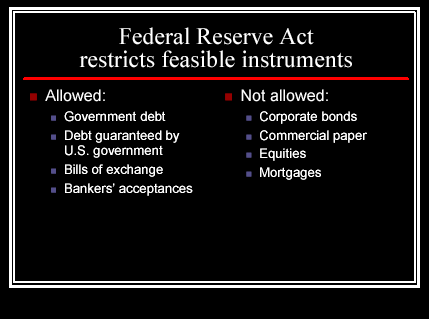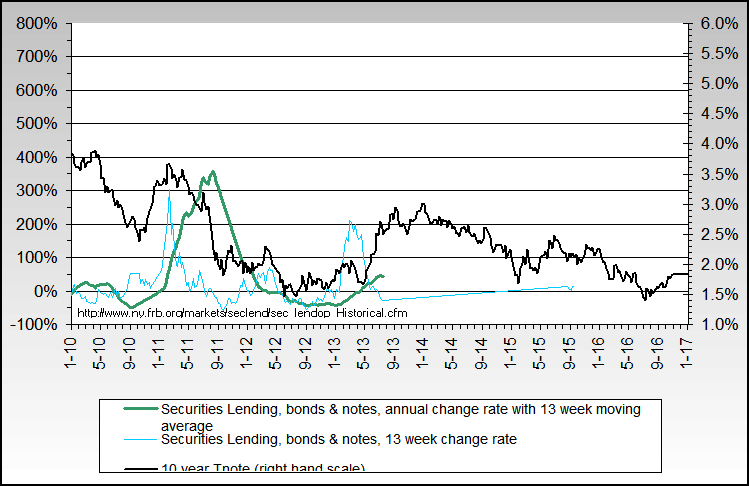peterm and i just exchanged some msgs which we decided to post to start a thread
I think all agree that the mess we are in results from decades of ever expanding credit/debt. The Ka-Poom theory sees some disflaflation first from reduced credit availability (housing), and forecasts high inflation from attempts from political pressure and central bank actions to revive the economy. The theory assumes that the Ka phase will not become deflationary as the liquidity injection will start before deflation takes hold.
I do agree 100% that this is the preferred and natural reaction from the powers. However I am not yet convinced that they can reliquify the system successfully.
One part of my doubt involves around how liquidity interacts with the economy and the volume of liquidity already out there (deminishing the return of an extra injection). There is a sea of liquidity sloshing around the globe and moving in and out different ponds (currencies, bonds, assets, stocks, etc.).
- how was this liquidity created in the past? Was this liquidity predominantly created at the central bank level, or at the financial bank level?
and
- what contributed most to increase liquidity (was it the lowering of fractional reserve requirements, lower of lending standards, or the sale of treasury notes, etc.)? What is the most important source in liquidity volume? Is money 'printed' or 'debt' created.
And to be answered later; can the same ways be used again to further increase liquidity?
This also leads to my questions about the liquidity system as such. Is it one system? Or are there more liquidity systems with different effects on the economy? e.g. First a 'central bank liquidity' where money policies are made and through notes real money is injected. Second a 'financial institute liquidity' where the money reaches the banks, hedge funds, mortgage companies, etc. and is multiplicated via fractional reserve methods and derivatives. And thirdly a 'broad liquidity' that reaches the public and is used in daily life?
- if you want to stimulate the economy is it then enough to just inject liquidity at the top or is it necessary that the liquidity reaches the public?
- will the economy be stimulated when the money created directly flows into hedge funds and banks playing the stock market?
- assuming you want to increase liquidity now to stimulate the economy. What measures are available?
can you increase the willingness to lend, cut taxes, increase wages, or are there other ways ?????
What extraordinary measures can the FED resort to? You can lead the public to the credit pool, but how can you make the public to drink that credit??
A also we should address another basic question.
- What power does the FED have? Does the FED set rates or does it follow rates set by the money markets? How big is the FED TIO operation compared to money markets and currency players?
They can probably bluff the stock market, but can they swing the bond or currency markets?
Another part of my questions about the future involves the international dimension and currency effects.
Often you see the argument that the recycle the Chinese 'savings glut' into treasury notes first and Fannie papers later is caused by a desire of the Chinese to stimulate consumer demand in the US and/or because the US is the best place to invest.
If it is indeed demand stimulation, how can you relate that to Schiff’s decoupling argument? Does this Chinese support not mean that the Chinese are very afraid being hurt US consumer slow-down (they are taking a huge currency risk)?
-what incentive do the Chinese have to continue their support now the housing ATM is faltering?
-what part of the US population will decrease spending? Is the Wal-Mart or the Nordstrom public? And where do these companies source their products?
-is there any reason to expect that the US can go in recession without being followed by the other world economies?
e.g. look at the mass of 'undocumented workers' that send money back home to support their families. What if these people loose their jobs or even when the dollar drops? How will that ripple into LATAM??
Debt
- when will US debt become untenable?
When do you get to the point that you need more debt to service the existing bebt, spiraling out of control?
Just a start .... so many questions so few answers
Originally posted by peterm
I think all agree that the mess we are in results from decades of ever expanding credit/debt. The Ka-Poom theory sees some disflaflation first from reduced credit availability (housing), and forecasts high inflation from attempts from political pressure and central bank actions to revive the economy. The theory assumes that the Ka phase will not become deflationary as the liquidity injection will start before deflation takes hold.
I do agree 100% that this is the preferred and natural reaction from the powers. However I am not yet convinced that they can reliquify the system successfully.
One part of my doubt involves around how liquidity interacts with the economy and the volume of liquidity already out there (deminishing the return of an extra injection). There is a sea of liquidity sloshing around the globe and moving in and out different ponds (currencies, bonds, assets, stocks, etc.).
- how was this liquidity created in the past? Was this liquidity predominantly created at the central bank level, or at the financial bank level?
and
- what contributed most to increase liquidity (was it the lowering of fractional reserve requirements, lower of lending standards, or the sale of treasury notes, etc.)? What is the most important source in liquidity volume? Is money 'printed' or 'debt' created.
And to be answered later; can the same ways be used again to further increase liquidity?
This also leads to my questions about the liquidity system as such. Is it one system? Or are there more liquidity systems with different effects on the economy? e.g. First a 'central bank liquidity' where money policies are made and through notes real money is injected. Second a 'financial institute liquidity' where the money reaches the banks, hedge funds, mortgage companies, etc. and is multiplicated via fractional reserve methods and derivatives. And thirdly a 'broad liquidity' that reaches the public and is used in daily life?
- if you want to stimulate the economy is it then enough to just inject liquidity at the top or is it necessary that the liquidity reaches the public?
- will the economy be stimulated when the money created directly flows into hedge funds and banks playing the stock market?
- assuming you want to increase liquidity now to stimulate the economy. What measures are available?
can you increase the willingness to lend, cut taxes, increase wages, or are there other ways ?????
What extraordinary measures can the FED resort to? You can lead the public to the credit pool, but how can you make the public to drink that credit??
A also we should address another basic question.
- What power does the FED have? Does the FED set rates or does it follow rates set by the money markets? How big is the FED TIO operation compared to money markets and currency players?
They can probably bluff the stock market, but can they swing the bond or currency markets?
Another part of my questions about the future involves the international dimension and currency effects.
Often you see the argument that the recycle the Chinese 'savings glut' into treasury notes first and Fannie papers later is caused by a desire of the Chinese to stimulate consumer demand in the US and/or because the US is the best place to invest.
If it is indeed demand stimulation, how can you relate that to Schiff’s decoupling argument? Does this Chinese support not mean that the Chinese are very afraid being hurt US consumer slow-down (they are taking a huge currency risk)?
-what incentive do the Chinese have to continue their support now the housing ATM is faltering?
-what part of the US population will decrease spending? Is the Wal-Mart or the Nordstrom public? And where do these companies source their products?
-is there any reason to expect that the US can go in recession without being followed by the other world economies?
e.g. look at the mass of 'undocumented workers' that send money back home to support their families. What if these people loose their jobs or even when the dollar drops? How will that ripple into LATAM??
Debt
- when will US debt become untenable?
When do you get to the point that you need more debt to service the existing bebt, spiraling out of control?
Just a start .... so many questions so few answers

 I hope you understand that I'm just giving very general and best effort quick answers here.
I hope you understand that I'm just giving very general and best effort quick answers here.
Comment